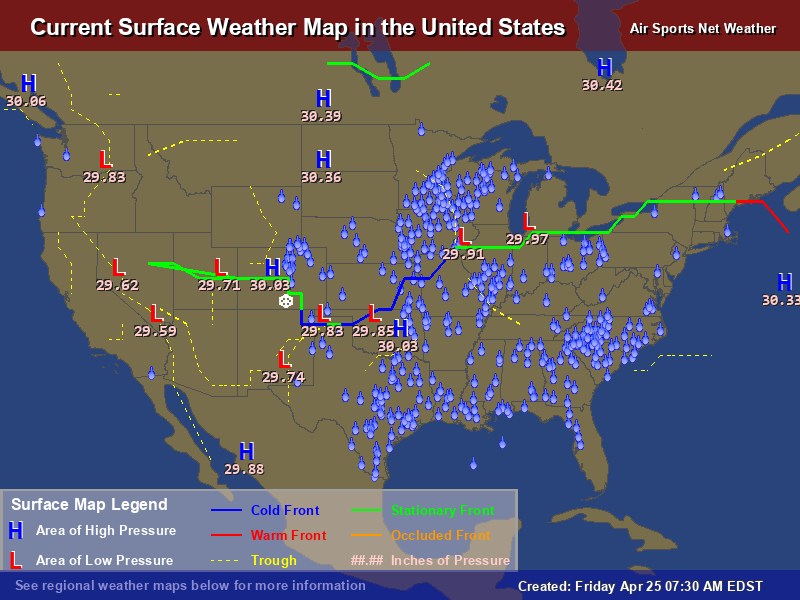High Pressure
A "High" is an area of high pressure surrounded by areas of lower pressure. Clear skies and dry weather are generally associated with higher pressures. In the northern hemisphere, airflow will circulate clockwise around an area of high pressure.
Low Pressure
A "Low" is an area of lower pressure surrounded by areas of higher pressure. Clouds, precipitation, and high winds are generally associated with lower pressures. In the norther hemisphere, airflow will circulate counter-clockwise around an area of low pressure.
Cold Front
A cold front occurs when a mass of cold air approaches and displaces the warmer air. The warm air is forced up to higher elevations. The rising of the warmer air may create cumulus and cumulonimbus clouds. These clouds may cause thunderstorms and rain showers, depending upon the strength of the cold front.
Warm Front
A warm front occurs when a mass of warm air approaches and displaces the cooler air. The temperature increases steadily while the dew point remains uniform. Barometric pressure readings will level off. While the warm front is passing, visibility may become poor. After the warm front has passed, stratocumulus clouds will form that may produce showers. Visibility will recover after the warm front has passed.
Trough
A trough is an elongated area of low pressure. It is similar to a valley that is surrounded by mountains. This valley of low pressure may bring clouds, showers, and wind shifts, especially after the trough has passed.
Stationary Fronts
When a warm front and a cold front meet with equal force, neither can push the other one out of the way. A stationary front is formed, which can cause mixed weather for days.
Occluded Fronts
When a fast-moving cold front catches up with a slow-moving warm front, an occluded front is created. The temperatures of the two fronts determine which type of occluded front is created. A cold front occlusion occurs when the cold front is cooler than the air ahead of the warm front. When this happens, the warm air is forced aloft creating a mixture of both warm front and cold front weather. A warm front occlusion occurs when the air ahead of the warm front is cooler than the cold front. When this happens, the cold front air moves over the warm air, trapping the warmer air below. The warm front occlusion is associated with thunderstorms, rain, and fog.

